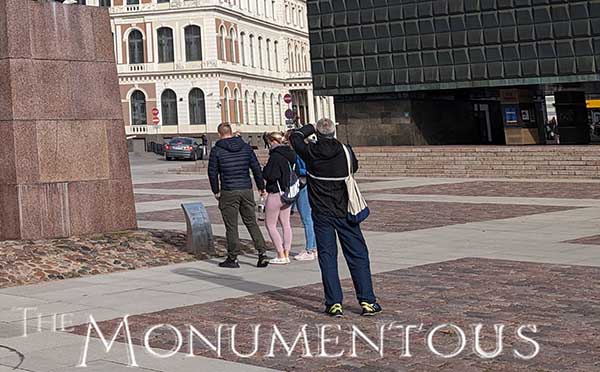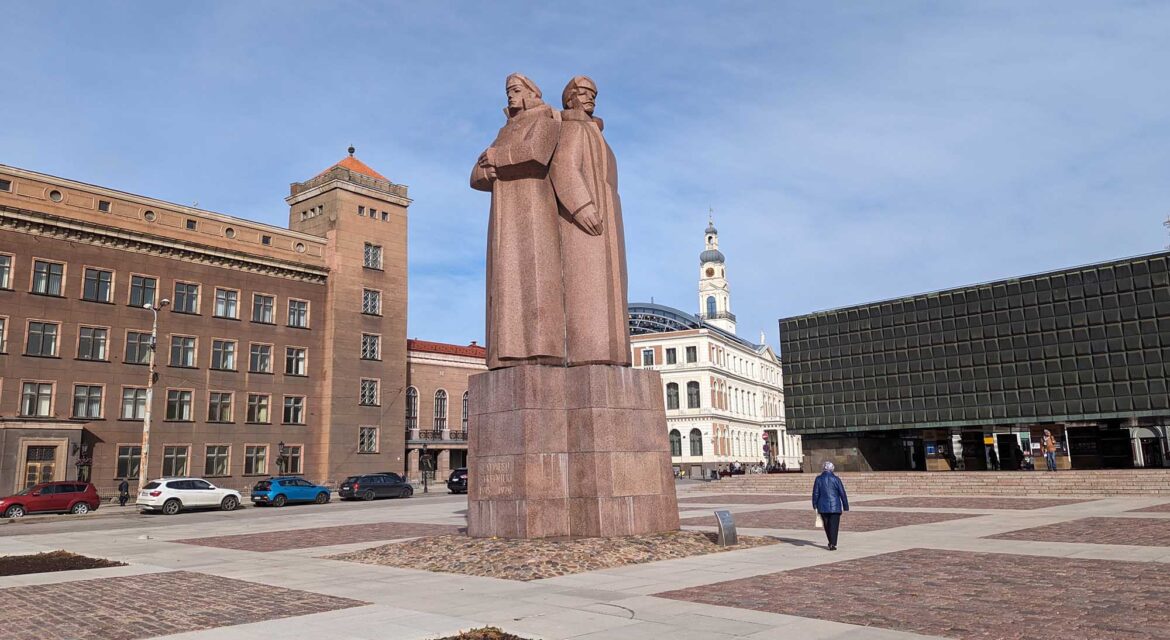 Built to honor the elite soldiers who fought during World War I, the Latvian Riflemen Monument dominates an old town square in the center of Riga in Latvia. Tied to a controversial era of the city and country, the monument highlights what it can mean for a landmark to help transform a space while staying connected to a larger legacy.
Built to honor the elite soldiers who fought during World War I, the Latvian Riflemen Monument dominates an old town square in the center of Riga in Latvia. Tied to a controversial era of the city and country, the monument highlights what it can mean for a landmark to help transform a space while staying connected to a larger legacy.

Honoring Latvians who Fought During World War I
 The Latvian Riflemen were a military battalion of the Imperial Russian Army that was formed to defend the Baltic territories against the Germans during World War I. The light infantry units armed with these weapons in the Russian army were called archers. Formed in 1915, they were used as an elite force in the Imperial and Red armies who fought through the 1920 treaty that ended the separate Latvian War of Independence. Most returned to the newly independent Latvia.
The Latvian Riflemen were a military battalion of the Imperial Russian Army that was formed to defend the Baltic territories against the Germans during World War I. The light infantry units armed with these weapons in the Russian army were called archers. Formed in 1915, they were used as an elite force in the Imperial and Red armies who fought through the 1920 treaty that ended the separate Latvian War of Independence. Most returned to the newly independent Latvia.
The Monument to the Latvian Riflemen was originally dedicated to the Latvian Red Riflemen who actively participated in the Russian Civil War. It was installed in 1971 during the Soviet era of the country. That is why some see it as a symbol of the old communist system and want to see it taken out. Others see it as an important tribute to the Latvians who fought during the early years of WWI. After being retitled as the Monument to the Latvian Riflemen that now honors all Latvian Riflemen, it has been able to transform the space and understanding of the era in a profound way.
Residing in an open square that is located next to the former Latvian Red Archers Museum, which has since become the Occupation Museum, the landmark represents an evolution of how this era is remembered and interpreted. Benches and areas to gather provide audiences with additional ways to engage with the space and history.
Physically defining the space but also helping to transform the legacy of the Soviet era of the country, audiences can interact with both in a way that makes sense for the entire community. Featured in maps and guides as one of the top attractions in the city, it highlights what it can mean to ensure history is preserved but also doesn’t overwhelm what makes sense for the present and future of a space and an entire country.

Connecting Audiences and Eras
 Defining the space near the Latvian Occupation Museum in a profound way, the Monument to the Latvian Riflemen was originally created to honor efforts that were tied to the history and interests of the Soviet Union. In being transformed into a monument that instead honors all of the Latvian light infantry units, it highlights how monuments can connect audiences and eras in a profound manner.
Defining the space near the Latvian Occupation Museum in a profound way, the Monument to the Latvian Riflemen was originally created to honor efforts that were tied to the history and interests of the Soviet Union. In being transformed into a monument that instead honors all of the Latvian light infantry units, it highlights how monuments can connect audiences and eras in a profound manner.

